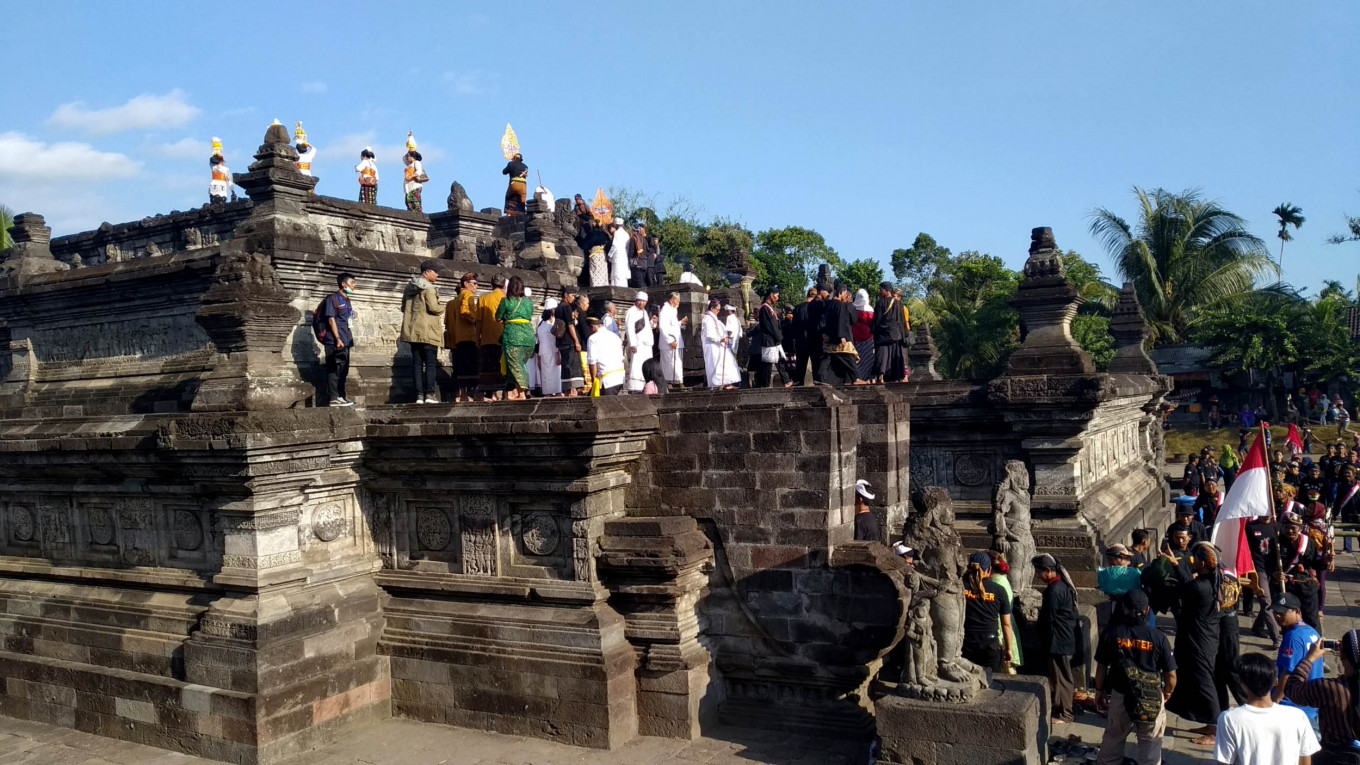Popular Reads
Top Results
Can't find what you're looking for?
View all search resultsPopular Reads
Top Results
Can't find what you're looking for?
View all search resultsPenataran temple ceremony embraces East Java's history of religious syncretism
Tumpeng Agung Nusantara, a traditional ceremony held at the Penataran temple complex in Blitar, East Java, on Friday, brought together Javanese, Hindu and Islamic cultures in a lavish celebration featuring food, dance and prayers.
Change text size
Gift Premium Articles
to Anyone
T
umpeng Agung Nusantara, a traditional ceremony held at the Penataran temple complex in Blitar, East Java, on Thursday, brought together Javanese, Hindu and Islamic cultures in a lavish celebration featuring food, dance and prayers.
The annual event, held since 2012, this year featured the attendance of religious and spiritual leaders. It was initiated by the Nusantara Cultural Preservation and Protection Foundation, a group based in Blitar and motored by spiritual communities whose primary concern is to foster open-mindedness among the local spirituality and major religions in Java, such as Hinduism, Buddhism and Islam.
“This is an extraordinary and noble event [in which] we, regardless of our religions, celebrate our ancestors’ heritage. Although this is a Hindu temple, it still brings out the sterling values of our ancestors,” Blitar Regent Rijanto said.
Rijanto said Tumpeng Agung Nusantara could be successfully run yearly despite only getting limited funds from the government.
Event committee head Aris Sugito said that Penataran temple was built in the 12th century.
Read also: 145-year-old Blitar coffee plantation lures tourists with colonial history, internship opportunity
“Penataran temple functioned as a great temple of the Majapahit kingdom, which ruled over almost every part of the archipelago. Therefore, this is not an exclusive temple for Hindu people, rather, it also for other religions and spiritual beliefs in the archipelago,” he said.
Penataran temple was made famous in 1815 by Sir Thomas Raffles, an English colonial government general. The story of Penataran, located 12 kilometers north of Blitar, is told in Raffles’ book The History of Java.
A Malang State University historian with expertise in archaeology, Ferry Riyandika, said the temple was used to worship the mountain gods of Mount Kelud.
He said Penataran remained important in the post-Majapahit era, even to the Islamic kingdoms that ruled over the archipelago.
“Therefore, we can say that Penataran temple has been owned by many dynasties and groups since long ago,” Ferry told The Jakarta Post on Friday.
Ferry also said that the reliefs on the walls of one of the temple buildings told local stories, instead of expressing Indian Hindu values. Other stories include that of the prince Panji and of two brothers, Bubhuksah and Gagang Aking. (gis/kes)











